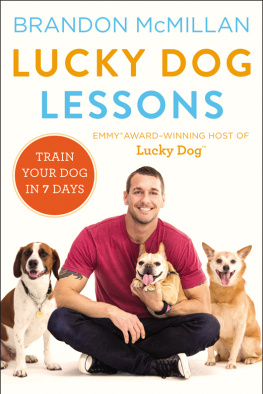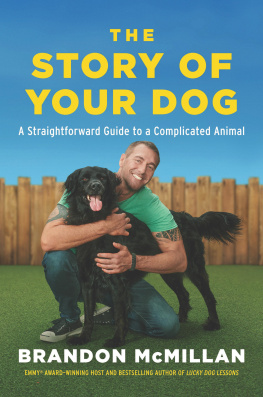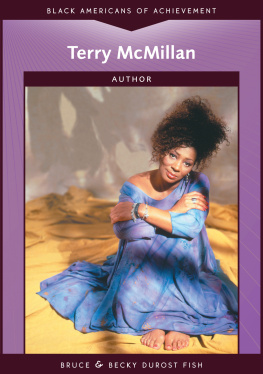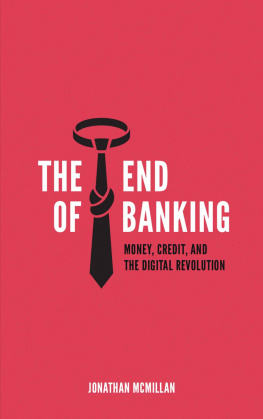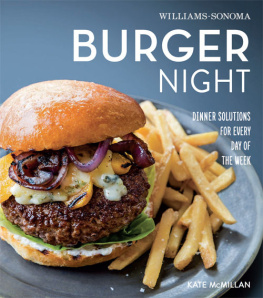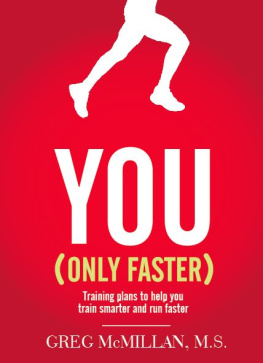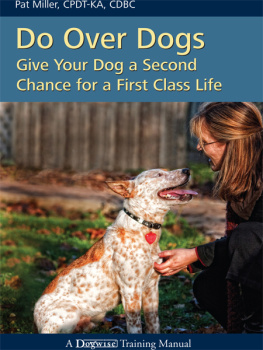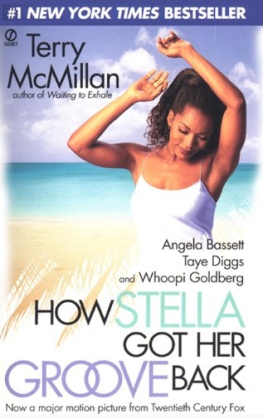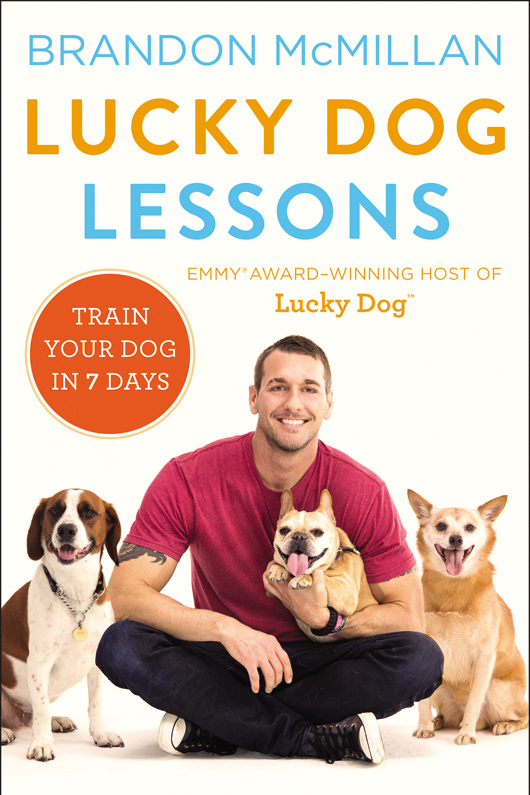To the millions of shelter dogs who never made it out.
CONTENTS
Guide
I was in a pub a few years ago and told the bartender what I do for a livingand then he asked me to leave because he thought I was drunk. The funny thing is, I hadnt had a single sip of alcohol. I shouldnt have been surprised, because when I tell people about my background, they often think Im lying. I guess training lions and tigers, working with grizzly bears, tagging crocodiles, catching venomous snakes for antivenin, and diving with eighteen-foot great whites for research isnt a standard answer to What do you do? But its always been my reality.
My childhood was unlike that of any other kid Ive ever met (except for my siblings), and I wouldnt have it any other way. It is because I grew up in the constant presence of animals that I learned to be in tune with their feelings and needs. That unusual connection is what brought me to the career and the personal mission that define my life today.
My parents were wild-animal trainers, and I grew up training elephants, tigers, bears, primates, and other animals for the circus, television, movies, commercials, and even magic shows. I cant remember a time in my life when working with animals wasnt a big part of who I was and what I was doing. Remember the tiger in The Hangover? I raised her from birth and trained her. Same with the animals in The Jungle Book, We Bought a Zoo, I Am Sam, Jackass, 24, Mike & Molly, a few other TV shows, and a hundred or so commercials and music videos. Ive trained tigers to do fake attacks, trained dogs for Super Bowl commercials, and even trained cockroaches for a Nine Inch Nails video (yes, even cockroaches can be trained). In my career so far, Ive worked on more than three hundred Hollywood productions in more than thirty countries. Ive continued to study animal training everyplace I go, learning something new from every country and culture.
And did I mention that over the years Ive trained thousands of dogs of all different breeds and sizes? After I earned a solid reputation on film sets, some of the talent on productions even started asking me to work with the pets in their homes. Ive trained dogs for hundreds of private clients, including Ellen DeGeneres, Andy Cohen, Rod Stewart, James Caan, Chris Hardwick, Wolfgang Puck, Hugh Hefner, Don Cheadle, Snoop Dogg, Eddie Murphy, Jaime Pressly, and Ronda Rousey.
Knowing I could train a dog to do just about anything, I wanted to utilize my ability for something I felt was bigger than any Hollywood production. After having the powerful and unforgettable experience of training a mobility-assistance dog for a wounded warrior who lost both legs to an improvised explosive device (IED) in Afghanistan, I started the Argus Service Dog Foundation. Watching this heroic marine and his dog bonding and helping each other inspired me to want to do more. Through the foundation, Im able to train dogs to perform complex tasks like retrieving objects, supporting handlers with balance problems, opening doors, turning on light switches, and even coping with post-traumatic stress disorderand then I have the honor of providing those dogs to disabled veterans.
But let me back up a little bit to how dogs in particular became such an important part of my life. When I was twenty-two, I had a life-changing experience: I read the statistics on shelter dogs in America and learned that every year in the United States alone, over 1,000,000 dogs are euthanized because they cant find homes. Thats one million. Thats a lot of dogs. And theyre not dying in some far-off place weve never heard of; its happening right here in our own cities and suburbs. I couldnt stand the thought of it, and ever since I caught on to that statistic, Ive dedicated more and more of my life to rescuing unwanted dogs who stood no chance of finding homes and to proving theyre just as trainable, if not more so, than breeder-bought dogs.
Back then, I was working for a Hollywood company that trained animals for film and television. We were a successful old-school company, and my boss had always worked mainly with breeder-bought dogs with known bloodlines. He believed that knowing everything about the dogs from birth made them better dogs to train. But my view was a little different. At the time, I lived in an apartment where I could see the yard of a local animal shelter. Every day after working with my companys stable of purebred dogs, Id go home and look out my window and see some of the same breedsGerman shepherds, rottweilers, Chihuahuas, pit bulls, and othersat the shelter. At first I was annoyed by the never-ending barking, but after reading the stats on shelter dog deaths, I came to the sickening realization that those dogs were living on borrowed time. Many were destined to end up among the million. The knowledge ate at me and inspired me to take action. My plan was simple, even if it was a little ambitious. Id rescue dogs who stood no chance of finding a home and turn them into movie stars. I went to my boss and asked if I could rescue one dog to train for the business. After a debate, which turned into an argument, he agreed on one condition: my job was on the line if I failed.
The next day I went to a shelter in LA that had one of the highest mortality rates in the Southwest. This was the Shawshank of shelters, a cold and outdated facility that had seen its funding stripped away by city budget cuts. It was bursting at the seams with dogs, and animals there had a greater chance of getting euthanized than of finding homes.
As I made my way down the row of kennels, I spotted a young rottweiler named Raven. She seemed sweet, had a good attention span, and was more interested in me than in all the distractions around her. I adopted her out of the shelter that day and took her home.
Raven had a few issues to work out, but after a couple of months of intensive training, she went on her first job, a music video for OutKast. Raven knocked it out of the park. The director told me my dog performed better than the humans did that day. After that, Raven went on to become the most-booked dog in the company. I didnt just get to keep my job; I got a green light to grow the companys pack with more shelter dogs.
Like Raven, my new rescues also went on to become obedience scholars, proving that shelter dogs arent damaged goods. They are hidden treasures with an ocean of untapped intelligence and loyalty. From then on, everything changed for me. I advocated for rescue dogs for every job, and I also started helping people find shelter dogs who would be good matches for their families, then training the dogs specifically to meet the needs of their new homes.
In 2011, I opened a boarding and training ranch just outside Los Angeles. I used the facility to train dogs for my service dog foundation, for movies and commercials, and for private clients. In addition, I kept a small pack of dogs I called my death-row dogs, animals I had rescued from shelters and brought home to rehabilitate, train, and place in homes. It was a labor of love, and I had a network of thousands of people on social media who were helping me with placement.
That small, private rescue operation caught the attention of a Hollywood production company. They were looking for an animal-themed show to round out a new CBS Saturday-morning lineup, and because some of the producers were rescue advocates themselves, they were fans of the work I was doing and wanted to see it firsthand.
I invited the producers out to visit the ranch for a few hours, and their stay extended to a few days and then a few weeks. The team decided to go with me to a city shelter to save a dogs life and document the process that followed. We all knew we might be able to do a lot of good with a program based on a rescue as it happened. That first dogs name was Bruno, and he was a wildly out-of-control terrier mix. I brought him to the ranch and started out by cleaning him up, evaluating his knowledge, and realizing hed had no previous training at all. The production group observed Brunos basic obedience lessons, and after a week, this dog had mastered the 7 Common Commandsplus an extra one.

